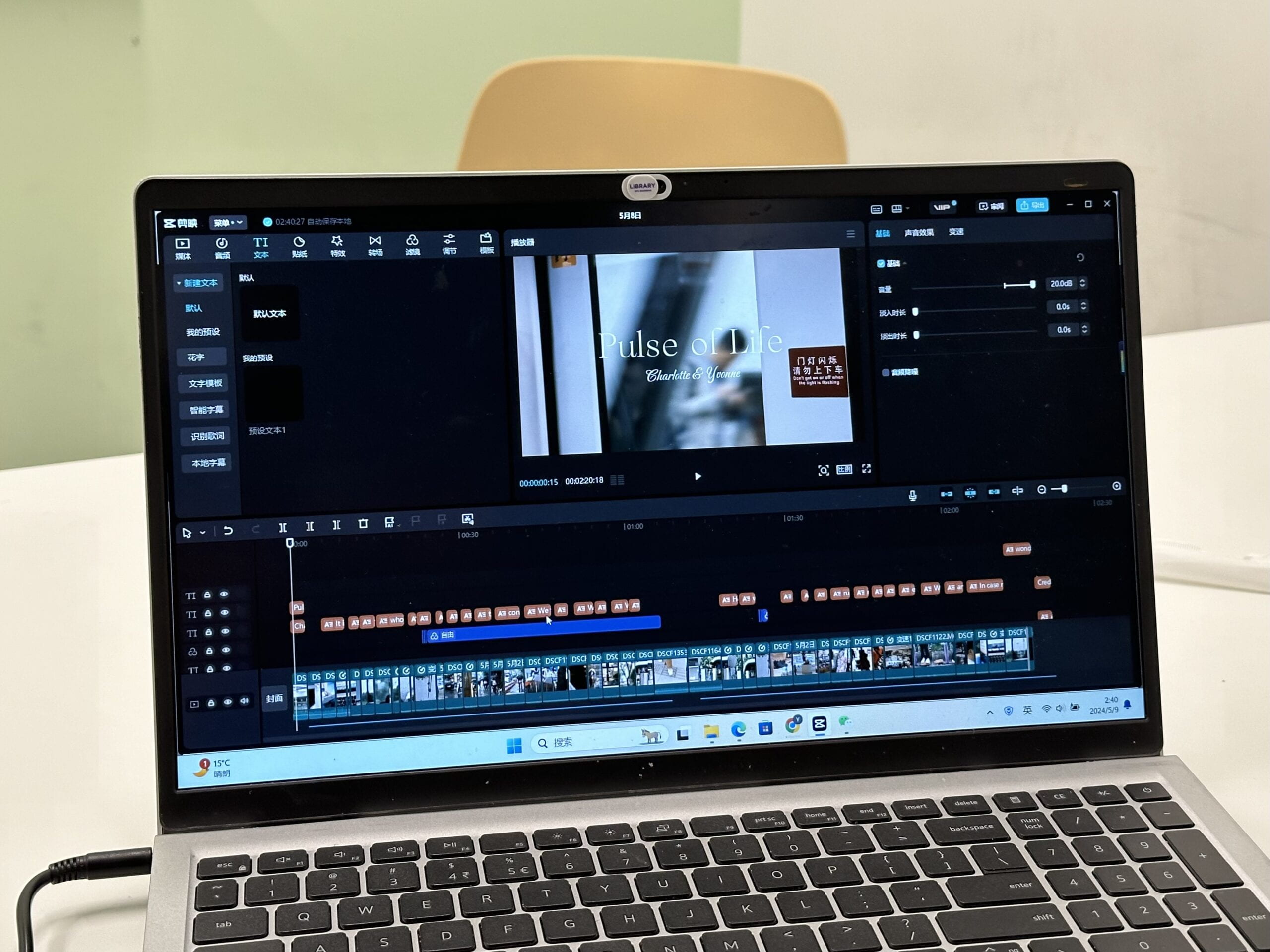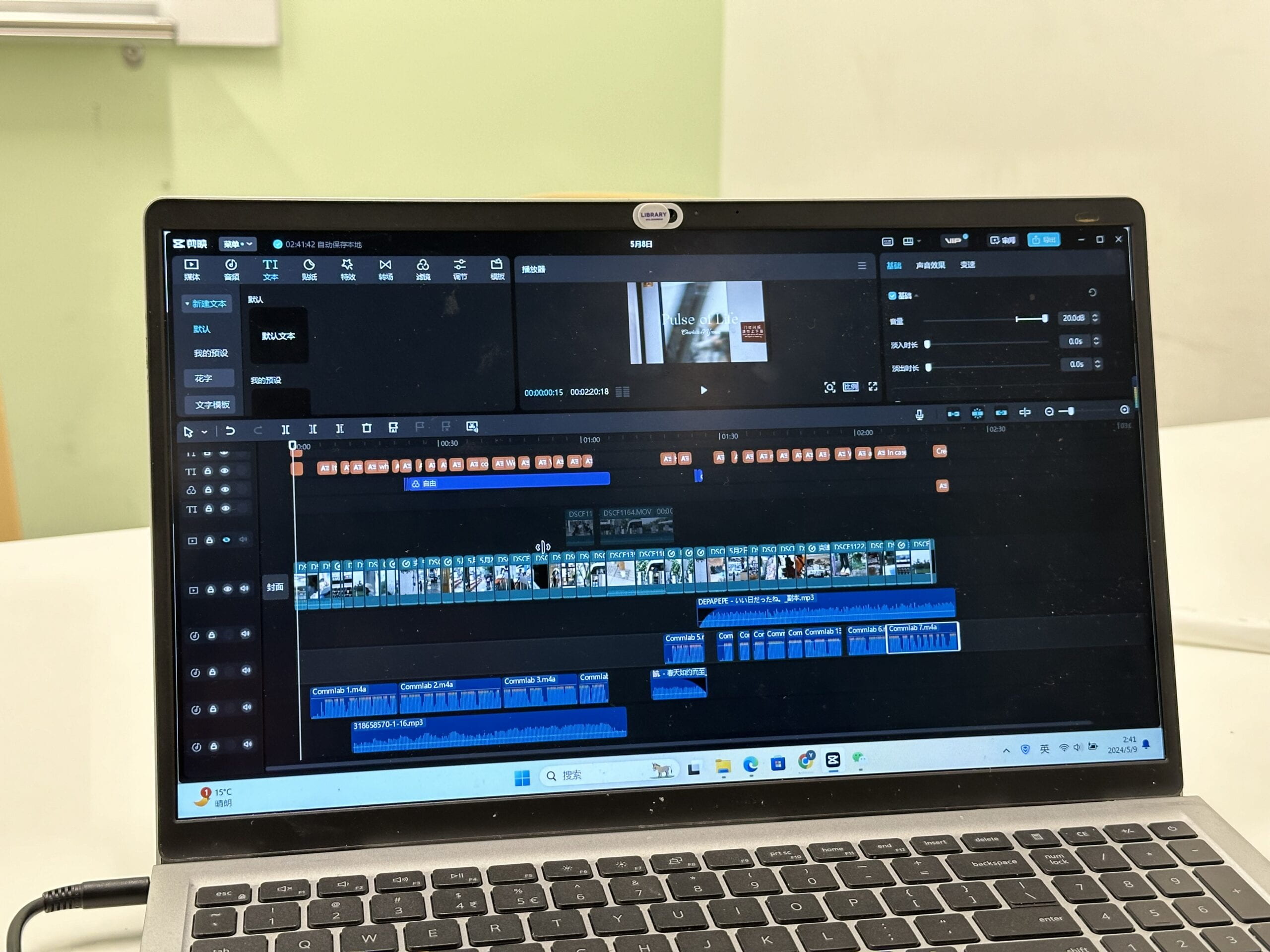Pulse of Life & 海马区
Jingchen Gao & Yiwen Xu
Instructor: Xingchen Zhang
I. Concept & Story
Our film aims to explore the theme of regret in life. Often, we insist that “things will get better after we get through this period,” a phrase frequently on people’s lips. It seems we spend our entire lives striving for the future, filled with various dreams, never allowing ourselves to pause. However, it is precisely because we invest so much expectation in the future that we tend to neglect our present feelings. In our film, we want to encourage the audience to reflect on their lives and advocate for the concept of “focusing on the present.” We hope that people will shift their attention to appreciating the small joys of the present moment.
We previously heard from our professor that many visual metaphors revolve around love stories. However, as we have not previously created videos or received professional video training, we cherish this opportunity to edit a video and look forward to exploring more profound themes through this film. This theme is one with which we are both very familiar and have personally experienced. We both feel sad about this phenomenon, and thus, we want to encourage our audience to make some changes.
Initially, we considered expressing this theme by portraying the stories of 2-3 different characters. However, this approach had the following drawbacks: it was difficult to find actors, and even if we found them, it would be challenging to establish connections among them; the duration was too short, making it difficult to clearly depict 2-3 stories in just one and a half minutes. Therefore, after multiple discussions with our professor, we ultimately decided to use a group portrait approach to convey this theme. This method not only expands the coverage of the main characters in the video, emphasizing the idea that “everyone faces such troubles, and everyone is a protagonist,” but also resonates more strongly with the audience. This is the reason we ultimately decided to use this approach for filming the video.
II. Creation Process & Execution
Here is the link to our original proposal and the storyboard: https://docs.google.com/document/d/1scInmF1CtWOL6pNLP1iqBBRr8kW-lh9quippMIbHZno/edit
Our storyboard played a limited role during our filming process because we made significant changes to our original plan after completing the storyboard. In short, we shifted from focusing on the trajectories of one or two individuals to using a more general group narrative to convey the theme, as I mentioned in the previous section. However, the process of creating the storyboard did indeed inspire us, leading to the subway shots. Thus, the storyboard primarily served as a source of inspiration.
Since we aimed to depict a group portrait, we did not extensively filter the filming locations. Instead of sticking to one or two specific settings, we took our camera to various places in the city, capturing every scene we found compelling. However, we were not entirely without consideration for the locations. To convey that the anticipation for the future and the neglect of the present spans all age groups, we consciously chose groups from different age ranges—childhood, adolescence, adulthood, and old age—and ensured that their screen time was roughly equal. We also selected appropriate locations for different age groups, such as schools, playgrounds, subways, and residential areas. During the filming process, our most prominent model was our professor, whom we invited to serve as the narrative thread from the beginning to the end of the project. Through his story on the subway, we aimed to express the theme of “time travel.” We were also deliberate in controlling the visual language during the filming process. We used close-ups, medium shots, and long shots, combining static scenes with dynamic shots to provide a diverse visual experience and avoid monotony.
The most challenging part of our production was the time travel segment. The scenes before and after the time travel sequence were quite emotional, moving from somber to more hopeful tones, making time travel the most indispensable part of our visual language. However, since time travel itself does not exist, the main challenge was to make the audience aware of the temporal shift. To address this, we employed several techniques: using a dark yellow vintage filter to represent the memory segments, accelerating the footage during the time travel, and altering the narration and background music. We were quite satisfied with the final effect.
We did not use Adobe Premiere for editing. After confirming with our professor that using Adobe Premiere was not mandatory, we opted for CapCut as our video editing software. The editing process consisted of the following steps: importing the video footage from the camera to the computer, deleting unnecessary shots, reviewing the footage from start to finish, arranging the shots according to our narrative, adjusting the duration and speed of each shot to keep the total length around two minutes, and adding music, narration, and special effects. We spent an entire night editing the video together, achieving our desired effect by dawn. After presenting in class, we consulted our professor for feedback, spent another night revising the original version, and produced a derivative version based on the feedback. Overall, the editing process went smoothly, and the final result met our expectations.







III. Collaboration
My partner and I did not have distinctly separate roles. In fact, we worked together on the project almost all the time. However, in terms of specific tasks, I leaned more towards shooting video clips with the camera, while Yvonne took on a greater responsibility in the editing process. From the outset, our ideas were highly aligned, and we never encountered any disagreements or conflicts. Nevertheless, we continuously provided each other with inspiration and detailed suggestions. For instance, she would point out interesting people and events nearby and afar while I was filming, and I would refine her editing work. I am extremely grateful for my partner and our collaboration. Without our complementary efforts, the project could not have progressed as smoothly as it did.

IV. Aesthetics & Results
In terms of aesthetics, considering our theme, we adopted a relatively vintage tone and inserted a vintage filter in the middle of the video. We believe that the visual style integrates well with the theme. We also selected different background music according to the tone of the video, ranging from relatively dull and sad to cheerful. The change in background music serves as an effective way to subtly indicate the theme to the audience. Furthermore, as mentioned earlier, we altered the speed and rhythm of the video clips and the camera angles in the middle of the video to convey a richer and more varied visual experience to the audience.
In summary, this visual metaphor project progressed very smoothly. I am grateful for this opportunity, which allowed me to collaborate with my talented and hardworking partner as well as use my preferred shooting style and editing techniques to express a theme that I care about deeply.

Leave a Reply